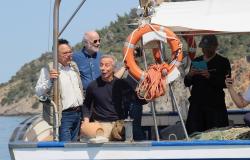“Finland has a rich and fascinating history in design, deeply rooted in both our national identity and our culture of life. This culture is fully expressed in Helsinki, the former design capital of the world, where public policy and private enterprise have worked together to build a knowledge economy based on innovative, high-value activities that have design thinking at its heart.” These are the words chosen by Kaarina Gould, CEO of the Foundation for the Finnish Museum of Architecture and Design, to accompany the launch of the tender for the design of what will become the new point of reference for the Finnish cultural scene. After completing the merger between the Museum of Finnish Architecture and the Design Museum Helsinki, work is being done in the Northern European city on the development of a unified museum centre, dedicated to both disciplines.THE HENSINKI MUSEUM OF ARCHITECTURE AND DESIGNStructured on two levels of competition, the competition for the future museum of architecture and design of Hensinki will end in September 2025. All parties interested in participating in the competition, in addition to consulting the official website, are invited to take part in the public meeting which will be streamed on April 24th. A useful initiative to know the details of the operation, including salient information about the site subject to the intervention. The building at the center of the tender, in fact, will have to be built in the southern port of Helsinki, in a historic area at a short distance from some of the city’s landmarks. The complex will cover 10,050 m2 (GFA); the total budget is approximately 105 million euros. The completion of the construction is set for 2030.THE COLLECTION OF THE FUTURE MUSEUM CENTER OF FINLANDFor international designers this is therefore an opportunity of great interest, also because the context in which they are called upon to intervene is that of a city (and , more generally, of a geographical area) whose reputation is also strongly linked to the widespread feeling of trust towards design, understood in all its forms. Based on the principle of “democratization of design tools”, the museum was conceived as a space intended to host heterogeneous exhibition activities, from the presentation of historical collections to experiments with new media. There must also be spaces for events, conferences, workshops, a library and a bar-restaurant overlooking the seafront. The collection, focused on Finnish architecture and design, will comprise over 900,000 works, including artefacts, objects, models and photographs relating both to leading companies in the local context and to professionals of recognized international fame such as the Aaltos.[Immagine in apertura: Helsinki. Foto di Veikko Venemies su Unsplash]
For Latest Updates Follow us on Google News





